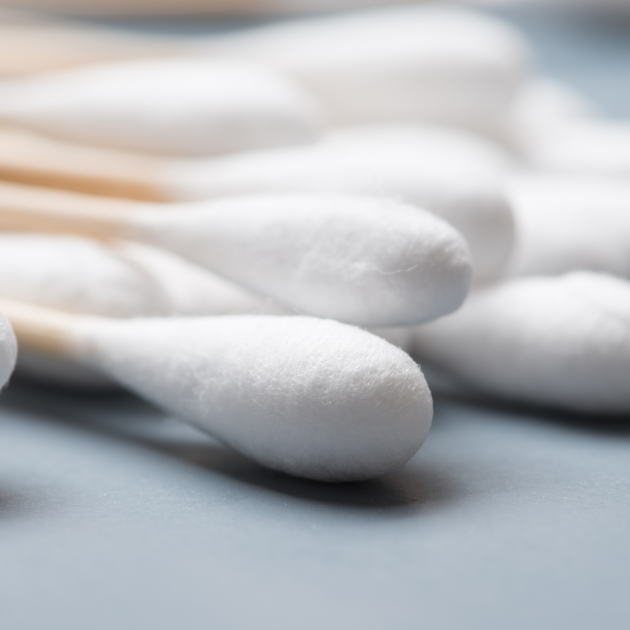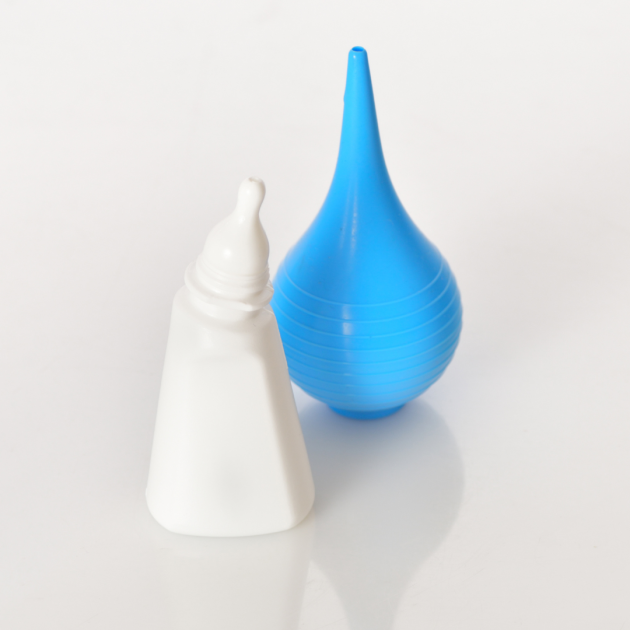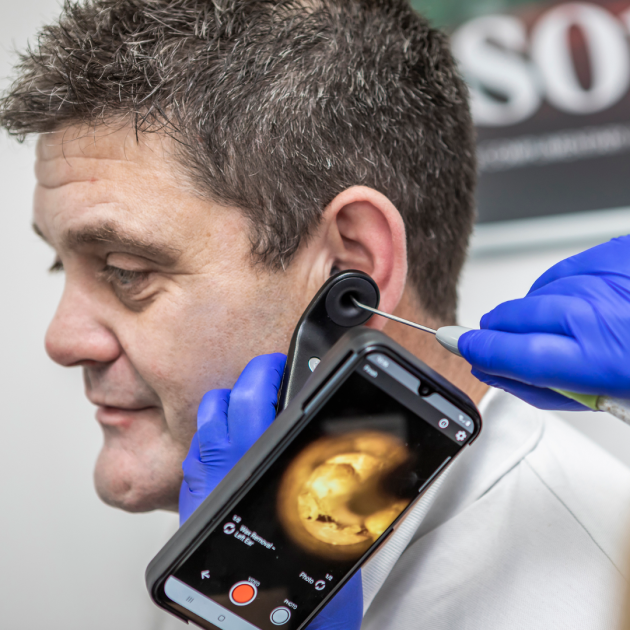
Hands up, who has tried to clean their ears at home? We are all guilty of it, whether that is grabbing a cotton bud, following an online video tutorial, or testing a D.I.Y. hack. But did you know that attempts to remove earwax yourself can do more harm than good?
So what are the big no-nos of removing earwax yourself, and what danger could they put us in?
Removing ear wax at home
When it comes to at-home wax removal or D.I.Y. methods, the internet is full of them - but do they work, and are they safe? Well, let us talk through some of the most popular methods and why they aren’t so good for us.

Cotton buds: Despite being one of the most common tools used by people to clean their ears, cotton buds can do a lot of damage. When a cotton bud is inserted into the ear canal, rather than cleaning your ears, it can push earwax further down the ear canal, creating a blockage and causing the wax to become impacted. Cotton buds can also scratch the wall of the canal, causing an increased risk of infection and, if inserted too far, could burst your eardrum.
Ear Candles: Over recent years, ear candling has become quite the trend online. The process involves lying on your side and putting a hollow ear candle in the ear. As the candle burns, it is then meant to create suction which supposedly draws the wax out. There is, however, little evidence to back up this method, and it can be quite dangerous. Not only are you at risk of burns from the candle, but you also run the risk of worsening the blockage and could even puncture the eardrum.

Peroxide Drops: Another common method of D.I.Y. wax removal is using peroxide drops which will soften and break down earwax. Whilst these are available to purchase over the counter, we do not recommend them because of the risks associated. These drops are not safe to use should you have an existing ear injury or suspect an ear infection, as they can cause further pain or worsen the infection. Furthermore, if these drops are used in their undiluted form, they can also cause spells of dizziness, irritation and discomfort, and even temporary hearing loss. Only use peroxide-based drops if you are directed to do so by a medical professional.
At-home removal kits: Another method taking the internet by storm is the at-home removal kit. Available for next-day delivery from many online retailers, at-home removal kits would do a good job, right? Wrong, they will do quite the opposite. Inserting anything into your ears is dangerous when you don’t know what you are doing or looking for, so it’s always best to leave it to a professional. These kits often come with tools such as syringes or suction devices, which can also cause damage to the ear canal if not used correctly.

Water bulbs: Water bulbs or ear syringes are another popular method of at-home ear wax removal. These bulbs are filled with water which is then squirted in the ear to remove the wax. This method does work to some extent, removing the loose bits of ear wax. However, it doesn’t come without risk, and won’t work against bigger wax build-ups. Not only can the pressure from the water damage the ear canal, but the water itself can also push the wax further into the ear, causing blockages and impaction. As well as that, if the water used in the bulb is not sterile, it can lead to infection.
Dangers of ‘do it yourself’ ear wax removal
Any type of D.I.Y. wax removal has its risks and can lead to serious consequences, so think twice before having a go on yourself or someone else and see a professional instead. Here are just some of the dangers you could cause:
Damage to the ear canal and eardrum: When attempting to remove ear wax yourself, you risk tearing or cutting the delicate skin of the ear canal, and potentially puncturing the eardrum, which can lead to pain, infection and, in severe cases, permanent hearing loss.
Inflammation and infections: The ear canal can become irritated and inflamed as a result of D.I.Y. wax removal. This can leave the ear susceptible to bacterial or fungal infections, which can result in pain, discharge, and even damage to the inner ear.
Impacted wax: When ear wax is pushed further down the ear canal as a result of cotton buds or other removal tools being inserted, it can become impacted, which means it becomes stuck and difficult to remove. Impacted wax can cause temporary hearing loss, tinnitus and even vertigo.
Permanent hearing loss: One of the scariest results of D.I.Y. wax removal is causing permanent loss or damage. Our ears and the structures within are very delicate and can be easily damaged if the correct care is not given. This includes damaging our delicate ear drums.

The best way to remove ear wax
The best and safest way to remove your ear wax is to get it done by a qualified professional who can safely remove your wax without causing any damage.
Most practitioners will use one of several possible methods to safely remove your wax including manual removal, irrigation, and microsuction. The method used will be dependent on your level of wax build-up, the position of it within the ear and any pre-existing medical conditions you may have.
Why choose Leightons?
At Leightons, our audiologists and wax removal clinicians have been trained on the very latest and safest methods of ear wax removal, so you can rest assured that your ear wax will be dealt with in the very best way.
Your care doesn't stop there. We conduct a quick hearing health check following your ear wax removal, and if any issues or concerns are noted, we will invite you back for a FREE comprehensive assessment of your hearing.
For complete care, we have our MyLeightons Care Plan. On this plan, you’ll be entitled to bespoke hearing benefits, along with a wide range of other exclusive discounts on glasses, sunglasses, and contact lenses.
Book today!
So the next time you think about trying to clean or remove wax from your ears at home, don’t. Let us do it instead.
Call us on 0800 40 20 20 or click below to book an appointment.







